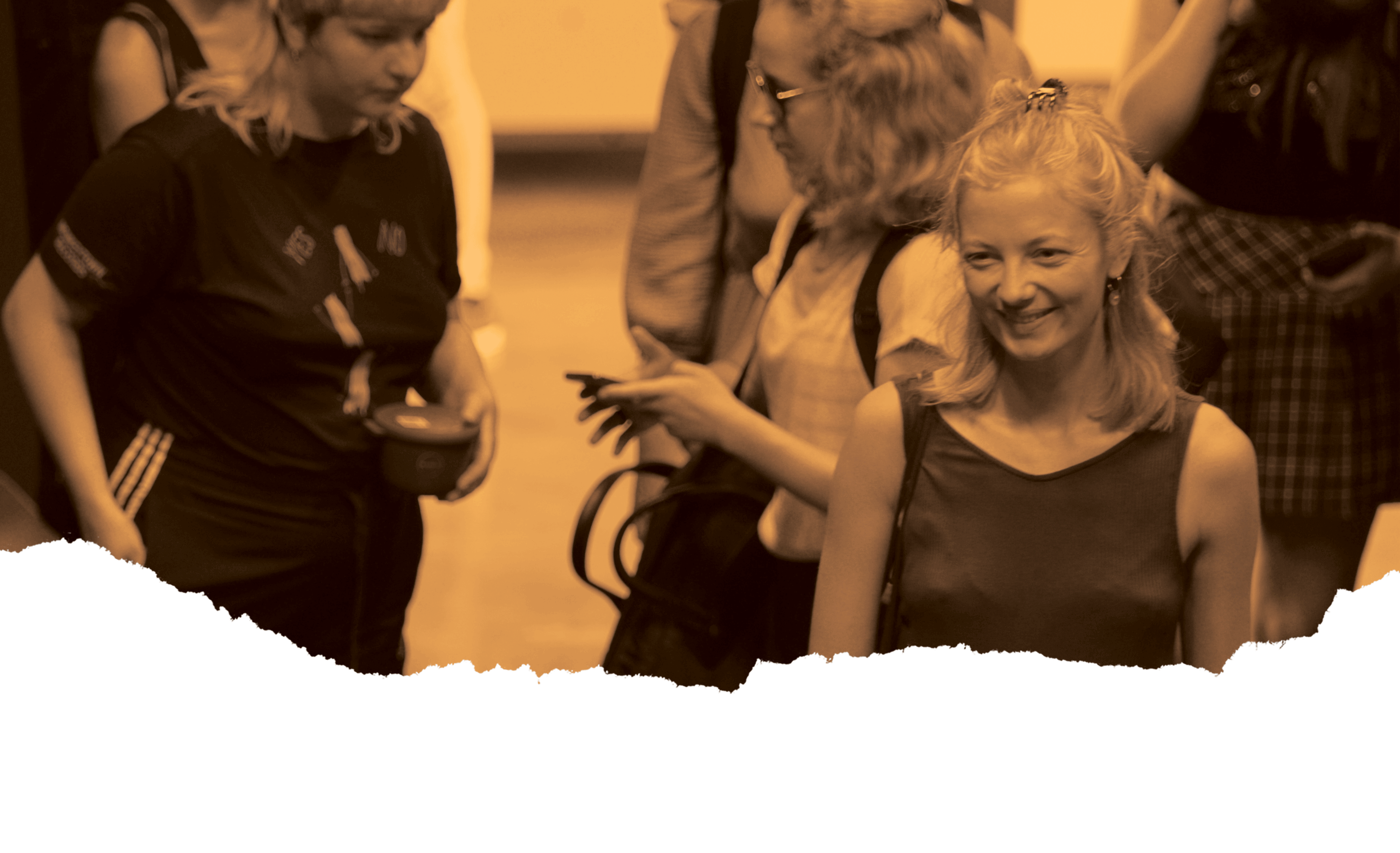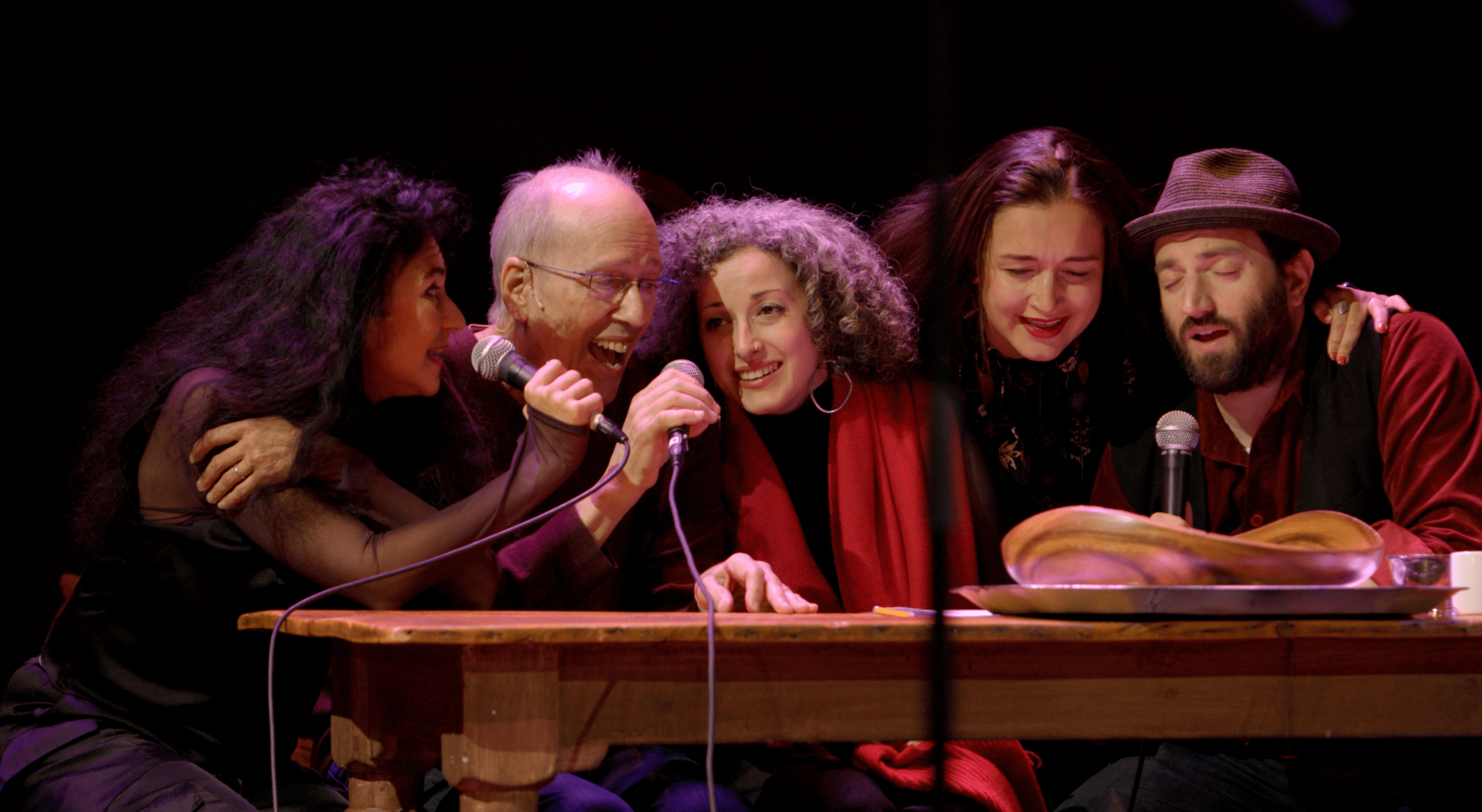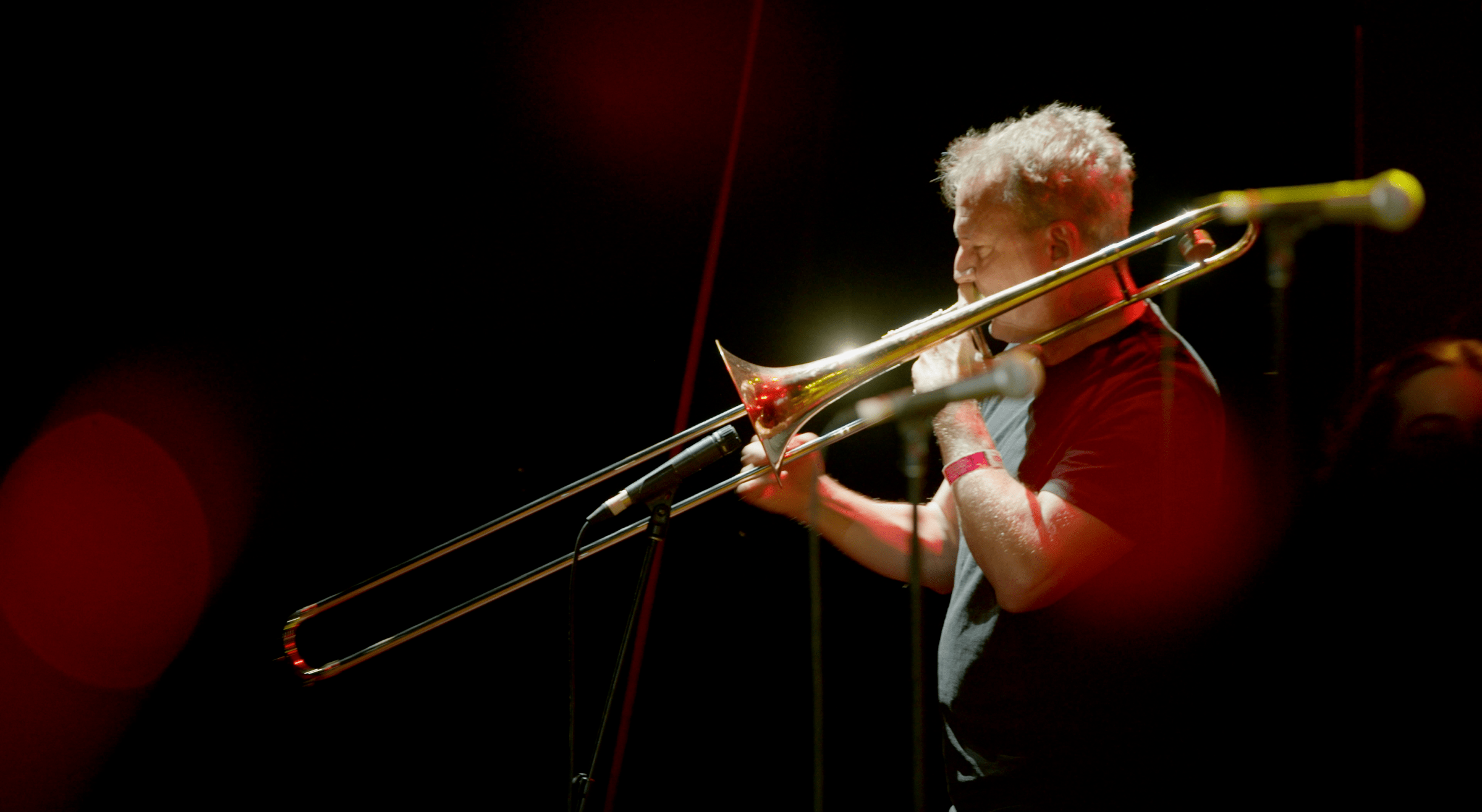


Welcome to Yiddishland offers an upbeat, witty and timely exploration of this international community of artists, who are rediscovering and revitalising Yiddish culture. Whilst being a highly entertaining Arts film, full of joyous music, and performances; it also reframes our understanding of Jewish culture and identity.
The film is timely in that it breaks down the current reductionist stereotyping of Jews that allow anti-Semitic hate to fester and constructive discourse to suffocate. It probes the nuanced aspects of Jewish culture and identity to reveal the multi-layered aspects of what it means to identify as Jewish and engage in Jewish culture.
Through intimate interviews and rare behind-the-scenes access to some of the world's top musicians and performers working in Yiddish, we showcase the innovative works of artists who use this ancient language as a vehicle for addressing contemporary issues such as Queer identity, the refugee crisis, war and authoritarianism.
This community is not large in overall numbers but they are global, spreading from Mexico and Buenos Aires, Berlin, New York, Paris, Melbourne and more.
They are having a big impact. Indeed they are driving a renaissance in Yiddish Arts and Culture.

Yiddish never belonged to one nation, it crossed borders, and was open to all. You don't even need to be Jewish.
As we travel through YIDDISHLAND - not a place or a homeland, but a headspace, a heartspace, without borders - we journey across continents, from Melbourne to Berlin, New York to Haifa to meet a diverse array of individuals who find solace, identity, and inspiration within Yiddish language and culture. These “citizens of Yiddishland” as they ironically call themselves, did not grow up with Yiddish in their lives, but have somehow arrived at it via their own unique personal journeys . The film explores these journeys - how and why they were drawn to Yiddish - and reveals the pivotal role that Yiddish is playing in their lives and artistic practice today.
These young YIDDISHISTS describe themselves as cultural Jews -- their identity informed by a thousand years of rich, visionary and progressive Yiddish culture.
Many of them (but not all) are secular Jews with progressive values of inclusiveness and diversity. Many young Jews are turning away from religion as the focus of their identity. A connection to the tragedy of the Holocaust will always be a central part of Jewish identity, but many Jews are also looking for something more positive to define them. They find in Yiddish, a link back to a rich, thriving culture, and find a sense of pride, identity, and belonging in that.
Furthermore, in the context of a world divided by hostile nationalism, racism, and authoritarianism, many are drawn to a more internationalist, multicultural, worldview.

Why This Film Is Important
I completed my final round of filming for Welcome to Yiddishland - The Caravan Project in Haifa and Weimar - just before the horrors of Oct 7th and its aftermath in Gaza.
Little did I know how much the world would change after Oct 7th, and what a huge avalanche of anti-Jewish sentiment would be unleashed. However, part of my motivation in making this film, even when I began my research for it four years earlier in 2020, was to present some fresh images of Jewish people on film. I was aware, even then, of reductive, clichéd and uninformed ideas being expressed about Jewish people and the noticeable rise in anti-semitism in many countries.
I was also aware (as Barrie Kosky points out in the film) that representation of Jewish people on television and film is very limited. Jewish people are often represented as right-wing ultra-orthodox religious communities (as presented in Shtisel and Unorthodox) or depicted as Israeli military personnel carrying out daring anti-terrorism raids (as in Fauda). Additionally, many films focus on the Holocaust. But to quote Barrie again, “There is a whole world in between - and that world is Yiddish culture”.
I wanted to show my audience images of Jews who define their Jewish identity in other ways outside of these boxes: cultural Jews, Yiddishist Jews, secular Jews. My aim was to make the audience aware of the different shades, nuances and layers of Jewish identity. At the same time, I wanted to celebrate the achievements of what has been an incredibly rich and deep culture for hundreds of years and has made a significant and lasting impact on Western cultures in the fields of music, literature, theatre - not to mention Hollywood and film. I wanted to reference and celebrate some of these great Jewish artists.
Finally, I wanted to acknowledge and honour the pivotal role that artists play in reviving and revitalising endangered languages and culture. This is just as true in the context of indigenous culture today, as it is for the Yiddish culture.
We believe that now is the opportune moment for our film to be released, serving as a beacon of understanding, empathy and cultural celebration amidst turbulent times. I hope you enjoy this joyful film and come out singing - having learnt a lot along the way!
Ros